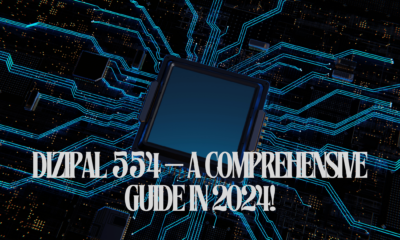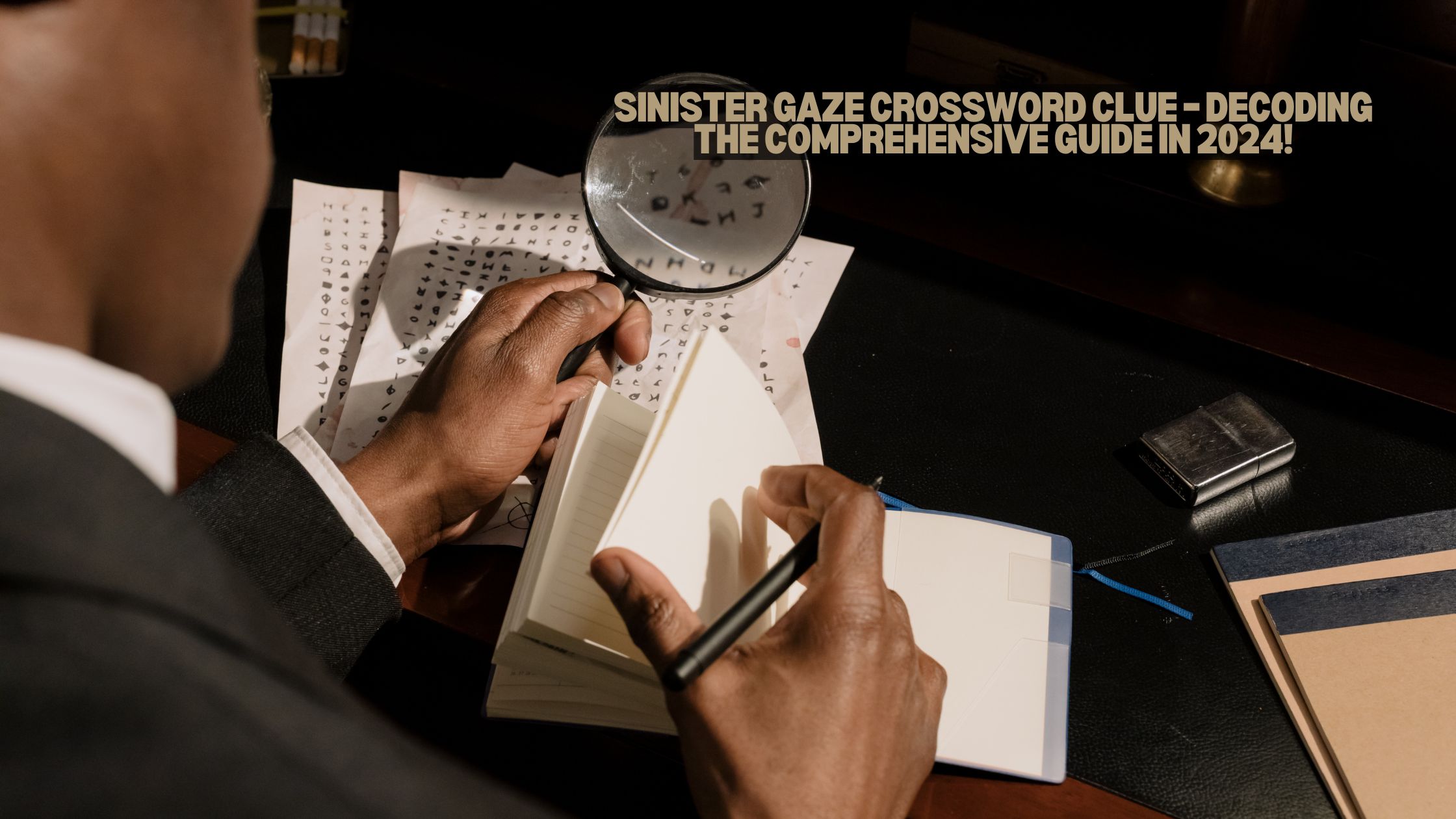Crossword puzzles are a timeless intellectual pursuit, engaging solvers with clever clues and intricate wordplay. Among the many types of clues encountered, the “sinister gaze crossword clue” stands out for its intriguing blend of linguistic challenge and psychological depth.
sinister gaze crossword clue conjures an image of an unsettling or threatening look. In literature and media, it often depicts a character’s expression filled with malice or evil intent.
This article delves into the nuances of this particular clue, exploring its meanings, possible answers, and strategies for solving it, while offering insights into the broader world of crossword puzzles.
What is sinister gaze crossword clue? – enhance your puzzle-solving skills!
The “sinister gaze” crossword clue is a fascinating example of how crossword puzzles can use evocative language to create challenging clues. In the world of crosswords, “sinister” often alludes to something malevolent or threatening.
This clue is designed to prompt solvers to think beyond the literal sense of the words and consider the nuanced meanings embedded within them. The term “gaze” suggests a prolonged or fixed look, which, when paired with “sinister,” implies a look that carries an underlying sense of menace or malevolence. Therefore, the clue combines these elements to lead to answers like “leer,” which encapsulates the idea of a suggestive or unsettling look that can be associated with sinister intentions.
Understanding this clue involves recognizing the interplay between the descriptive word “sinister” and the act of looking, which is central to the clue’s solution. Deciphering the “sinister gaze” crossword clue requires more than just recognizing synonyms; it involves grasping the subtle connotations of the words involved.
A “sinister gaze” could refer to various expressions of an unsettling look. Words like “leer,” “glare,” “scowl,” and “evil eye” might come to mind, each bringing its shade of meaning to the clue. For instance, “leer” specifically denotes a sly or malicious look, making it a fitting answer in many cases. On the other hand, “glare” conveys an intense and piercing look, often used to denote anger or hostility.
By exploring these potential answers and their nuances, solvers can enhance their understanding of how clues are constructed and learn to approach cryptic crossword puzzles with greater insight and strategy.
Understanding – discover insights, strategies, and solutions today!
The term “sinister” is imbued with a sense of malevolence that originates from its etymological roots. Historically derived from the Latin word sinistra, meaning “left,” it was associated with unfavourable omens and ill fortune, which over time evolved to imply something evil or threatening.
When paired with “gaze,” which denotes a fixed or intense look, the clue compels solvers to identify a word that merges both the physical act of staring with an underlying sinister connotation. This combination requires solvers to delve into the nuanced meanings of words, understanding not just their literal definitions but also their emotional and cultural implications.
To successfully unravel this clue, one must interpret how the term “sinister” influences the type of look described by “gaze.” The challenge lies in finding a word that conveys both the act of looking and an element of menace or dark intent. For instance, a “leer” represents a sly or unpleasant look, fitting the clue’s criteria perfectly by combining a visual action with a menacing undertone. Similarly, terms like “glare” or “scowl” may also fit depending on the puzzle’s context.
Mastering such clues requires a nuanced understanding of language and the ability to interpret subtle hints within the crossword puzzle’s framework, making the process both intellectually stimulating and rewarding.
Common Answers for the “Sinister Gaze” Clue – intriguing puzzle element!
When tackling the “sinister gaze” crossword clue, several answers fit the bill, each offering a unique nuance of meaning.
LEER:
This term describes a sly or suggestive look, often associated with a sense of malice or inappropriate interest. With its succinct four-letter form, “leer” is a frequent choice in crosswords. It effectively captures the essence of a sinister gaze, highlighting a look that conveys a hidden or unsettling intent.
GLARE:
The word “glare” denotes a fierce, penetrating look that can be perceived as intimidating or hostile. Although it can describe a range of intense stares, its association with aggressiveness and irritation makes it a fitting candidate for a sinister gaze.
EVIL EYE:
The phrase “evil eye” is rooted in various cultural beliefs, where it symbolizes a harmful or cursed look believed to bring bad fortune. This answer adds a layer of cultural and superstitious depth to the clue, making it a richer and more complex option.
STARE:
A “stare” refers to a prolonged and often unblinking look. While it can be neutral or benign, in certain contexts, a stare can be interpreted as unsettling or menacing, aligning it with the idea of a sinister gaze.
SCOWL:
To “scowl” is to express displeasure or anger through one’s facial expression, marked by furrowed brows and a downturned mouth. This answer conveys a clear sense of hostility or discomfort, making it suitable for a clue hinting at a malevolent look.
GLOWER:
When someone “glowers,” they look at others with a sullen or angry demeanour. This term effectively captures the emotional weight of a sinister gaze, reflecting a look imbued with resentment or irritation.
Analyzing the Clue – Strategies for Solving!
To solve the “sinister gaze” clue effectively, solvers should start by dissecting the clue into its essential elements. The term “sinister” carries dual meanings that are crucial for interpretation. Historically, “sinister” is derived from the Latin word for “left,” but over time, it has come to imply something malevolent or threatening. In crossword puzzles, this word typically leans towards its more ominous connotation, suggesting that the answer will involve a negative or sinister look.
Therefore, understanding this nuance is key to pinpointing the correct solution. On the other hand, the word “gaze” refers to the act of looking or staring intently. It is important to consider how this term modifies the meaning of “sinister” within the clue.
The combination of these two components hints at a term that describes a look with an unsettling or malevolent undertone. By examining these definitions and how they interact, solvers can narrow down their options and find a word that encapsulates both the sense of a menacing stare and the emotional weight implied by “sinister.”
Using Word Length as a Guide:
Crossword puzzles often specify the number of letters in the answer, which aids in narrowing down potential solutions. For example, if the answer is four letters long, “LEER” and “GLARE” become strong contenders. If the answer is longer, terms like “EVIL EYE” might be considered.
Leveraging Crossings and Context:
Crossword grids are designed so that answers intersect with others, providing additional clues. Solvers should use the letters from intersecting words to refine their guesses. For instance, if the intersecting letters suggest a word like “LEER,” it can confirm the solution.
Exploring Synonyms and Variations:
Sometimes, clues point to synonyms or related terms. In the case of “sinister gaze,” consider various words that convey a similar meaning. If “LEER” doesn’t fit, explore alternatives like “GLARE” or “SCOWL.”
Enhancing Your Crossword-Solving Skills!
Tips for Beginners:
- Start with Simpler Puzzles: Begin with easier puzzles to build confidence and familiarity with common clues and patterns.
- Look for Patterns: Recognize recurring patterns and common clue types to improve solving efficiency.
- Expand Your Vocabulary: A broader vocabulary aids in deciphering complex clues and understanding nuanced meanings.
Advanced Techniques:
- Familiarize with Clue Patterns: Experienced solvers recognize patterns in clue construction, such as common wordplay techniques and thematic elements.
- Practice with Various Puzzles: Engage with puzzles from different sources to adapt to diverse styles and difficulty levels.
- Join Crossword Communities: Participate in online forums or local clubs to share strategies and gain new insights.
- Keep Reference Materials Handy: A crossword dictionary or thesaurus can be a valuable resource for finding synonyms and exploring word meanings.
FAQs:
1. What does the term “sinister gaze” refer to in crossword puzzles?
In crossword puzzles, the term “sinister gaze” describes a look that suggests malice or menace. It merges the negative connotation of “sinister” with the act of looking denoted by “gaze.”
2. What are common answers for the “sinister gaze” clue?
Common answers include “LEER,” “GLARE,” “EVIL EYE,” “STARE,” “SCOWL,” and “GLOWER.” Each term captures a different aspect of a menacing look.
3. How can I solve the “sinister gaze” clue effectively?
Start by interpreting “sinister” as a negative or threatening connotation and “gaze” as a form of looking. Combine these insights to find a word that fits both aspects.
4. What is the significance of the word “sinister” in crossword clues?
“Sinister” often implies something evil or threatening in crossword puzzles. It adds a negative dimension to the clue, influencing the choice of the answer.
Conclusion:
The “sinister gaze” crossword clue challenges solvers to interpret a look imbued with malice or threat. Common solutions like “LEER,” “GLARE,” and “EVIL EYE” each offer a distinct interpretation of a menacing look. Mastering these clues involves breaking down their components, applying context, and practising regularly. With these strategies, solvers can enhance their crossword skills and tackle similar clues with confidence and ease.

 Entertainment7 months ago
Entertainment7 months ago
 Entertainment7 months ago
Entertainment7 months ago
 Technology7 months ago
Technology7 months ago
 Technology8 months ago
Technology8 months ago
 Technology8 months ago
Technology8 months ago
 Travel8 months ago
Travel8 months ago
 Business8 months ago
Business8 months ago
 Business8 months ago
Business8 months ago



